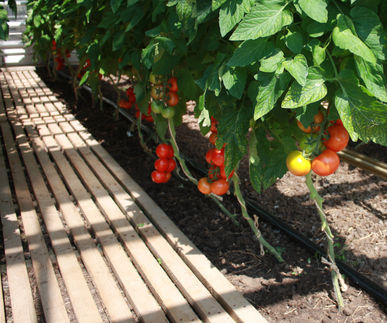Detect allergens in food within a few minutes
BfR research project on the development of innovative analytical methods
The food Safety Department of the Federal Institute for Risk Assessment (BfR) is working on the development of a rapid test to detect allergenic substances in food. Within the framework of a research project supported by the Federal Ministry of Food, agriculture and consumer protection (BMELV), analytical methods for official food control and the food industry are to be developed by the beginning of 2012 that are capable of detecting the tiniest traces of allergens in food within minutes. “We will fill a gap in scientific methods for food control”, says BfR President Professor Dr. Dr. Andreas Hensel. Since 2005 the main allergens have to be listed on food labels but right now there are only two official methods to detect them in the laboratory. They are time-consuming and can only be carried out with the corresponding analytical devices.
For nut allergy sufferers traces of peanuts can already be life-threatening. That’s why even small amounts of peanuts must be indicated on the labelling of packaged food if they are part of the formulation – like all other ingredients which are known to cause allergies. However, if traces for instance of peanuts reach a food unintentionally, it is up to the manufacturer to decide whether to indicate this on the label and there are no statutory requirements in this respect. Foods may carry wordings like “May contain traces of peanuts” or “Peanuts are also processed in our plant” on the packaging. Consumers then don’t know whether a product actually contains peanuts or the packaging bears this wording on precautionary grounds. For allergy sufferers this can lead to a major reduction in their choice of products.
Up to now, manufacturers wishing to test their products quickly and reliably for allergenic ingredients and to label them correspondingly had to carry out analyses which were sometimes time-consuming and not every laboratory was equipped to do them. One goal of the project coordinated by BfR is to develop a method in which extracts of the food to be examined are applied to a test strip which shows within ten minutes whether it contains an allergen and, if so, which one. There is no need for a specially equipped laboratory for a first rapid result (screening), the test can be done on site.
In addition, new modern analytical methods are being elaborated which reliably identify the genetic make-up of the allergenic substances even in highly processed food. To this end, the genetic make-up is copied one million times specifically in a real time polymerase chain reaction (PCR). The advantages: the reagents required are available everywhere and the methods can be used around the globe by manufacturers and inspectors. Furthermore, the methods should be sensitive enough to detect allergens even in the ppm (parts per million) trace range. What’s more, various allergens could be analysed in parallel including those which it had been difficult to detect up to now. The detection methods are intended to help food manufacturers to reduce or even completely avoid allergenic components which reach the food unintentionally. In this way consumers can be given more reliable information about the level of allergenic components in a food. The official food control can reliably test food for even the smallest traces of allergens with less time and material outlay. The project is scheduled to run up to January 2012.
Most read news
Topics
Organizations
Other news from the department science

Get the analytics and lab tech industry in your inbox
By submitting this form you agree that LUMITOS AG will send you the newsletter(s) selected above by email. Your data will not be passed on to third parties. Your data will be stored and processed in accordance with our data protection regulations. LUMITOS may contact you by email for the purpose of advertising or market and opinion surveys. You can revoke your consent at any time without giving reasons to LUMITOS AG, Ernst-Augustin-Str. 2, 12489 Berlin, Germany or by e-mail at revoke@lumitos.com with effect for the future. In addition, each email contains a link to unsubscribe from the corresponding newsletter.





















































